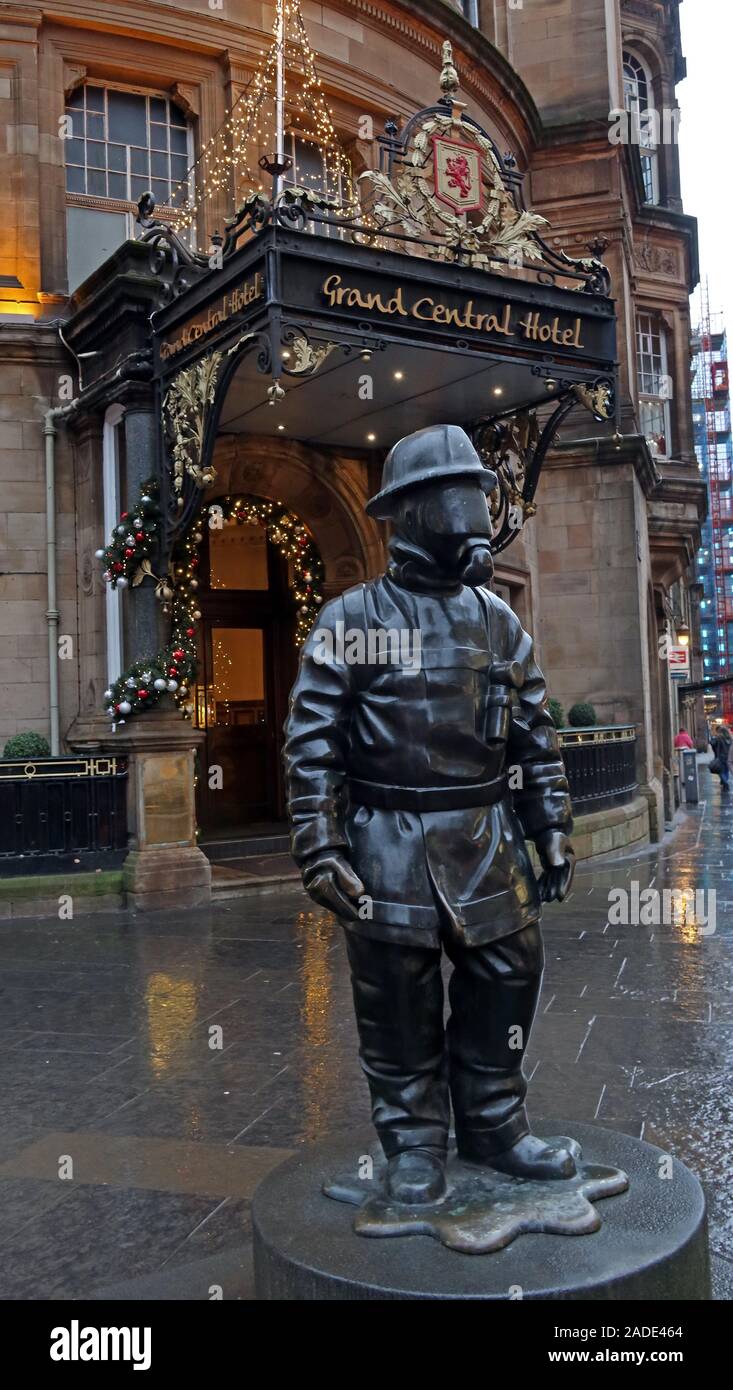Citizen Firefighter, 99 Gordon Street,in front of Grand Central Hotel,Glasgow,Scotland, G1,by sculptor Kenny Hunter,for Strathclyde Fire & Rescue 2001

Image details
Contributor:
Tony Smith / Alamy Stock PhotoImage ID:
2ADE464File size:
48.3 MB (1.7 MB Compressed download)Releases:
Model - no | Property - noDo I need a release?Dimensions:
3088 x 5472 px | 26.1 x 46.3 cm | 10.3 x 18.2 inches | 300dpiDate taken:
2 December 2019Location:
99 Gordon St, Glasgow,Scotland, G1 3SFMore information:
Kenny Hunter was born in Edinburgh 1962 and studied at Glasgow School of Art from 1983 - 1987. After graduating in sculpture, Kenny has gone on to practice in both the field of public and gallery based art becoming one of the UK's foremost artists with works in collections all over the world, including Paris, New York and Hamburg. These are his thoughts on Citizen Firefighter. Citizen Firefighter was conceived primarily to celebrate the fire service. But it is also an attempt, through a recognition of their work, to reclaim the political and civic space associated with the historical form of the public statue. While maintaining the clear, formal language of the past, the content and narrative of this new work differs in many ways from the historical tradition, and it is precisely through this rupture between Citizen Firefighter and what is generally understood to be the impact of historical works that we can begin to assess what kind of relationship now exists between citizen and resident, between statue and sculpture. The space opened up in this way creates the possibility of a dialogue of historical and sociological change. Through the work's symbolism, Citizen Firefighter appears to rekindle the onlooker's reflexes when faced with a nineteenth-century public monument. It differs, however, by both the neutrality of its stance and by the prominence given to the breathing apparatus, which has a democratising effect on human identity. The generic or quotidian aspect of the figure is further accentuated by a reductive treatment of form, in which all naturalist or realist traits have been suppressed. Subtraction peels away pathos, creating enough critical distance to enable the viewer to consider the complex "charge" inherent in the way the subject is presented. In this way the meaning of the monument itself is left partially open, thus creating a space that can be reinvested by the onlooker